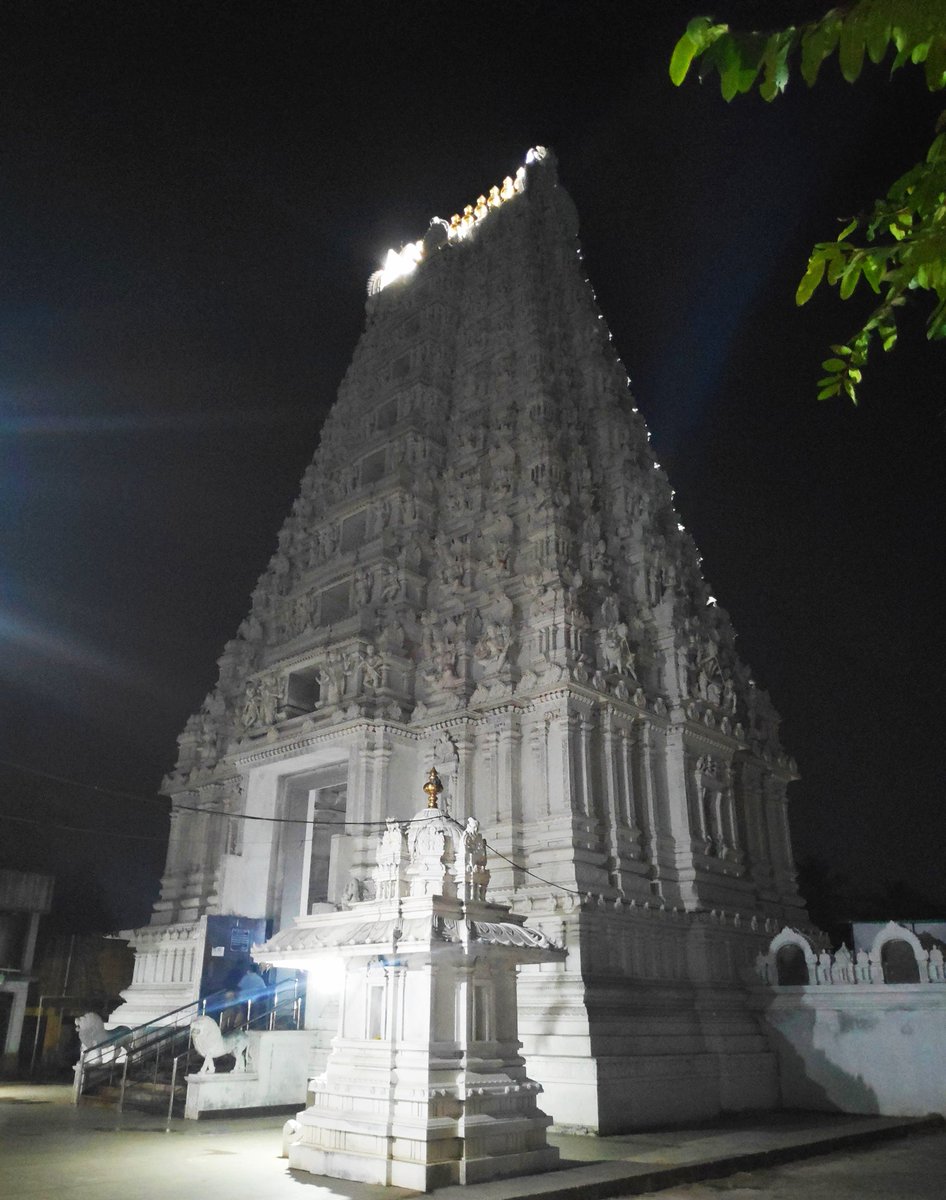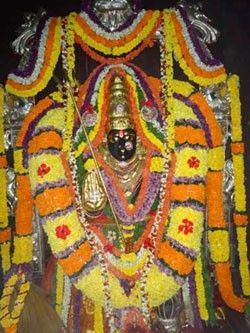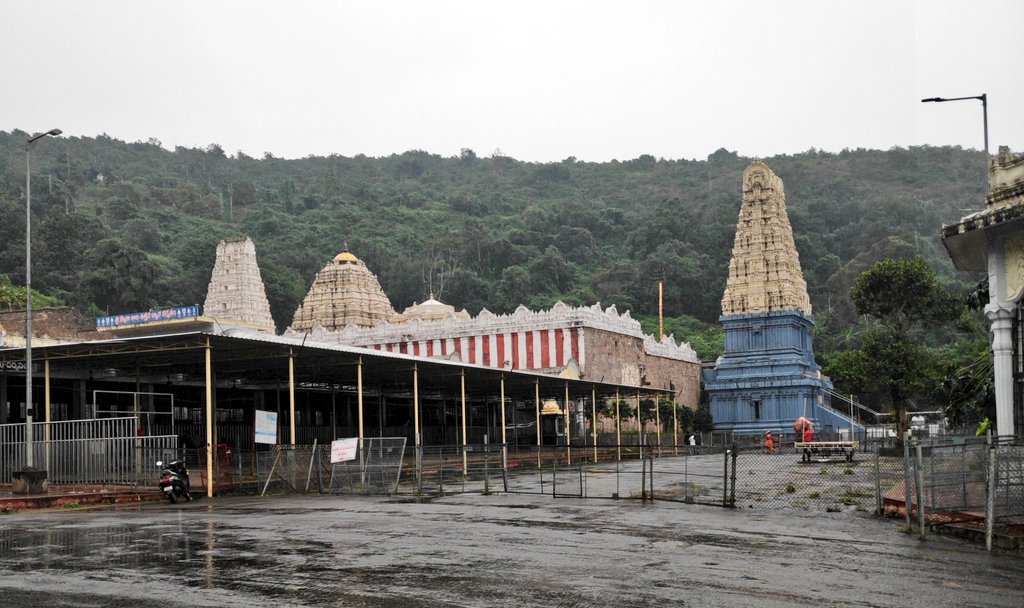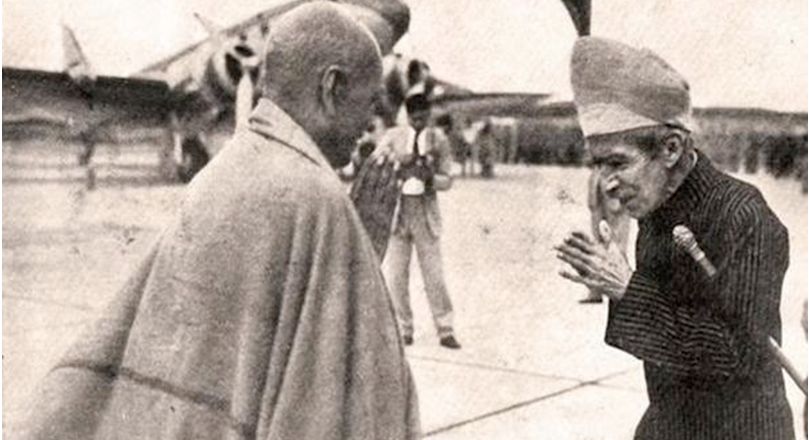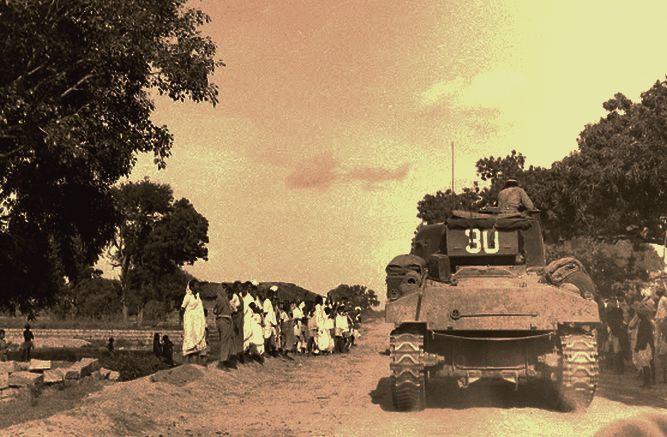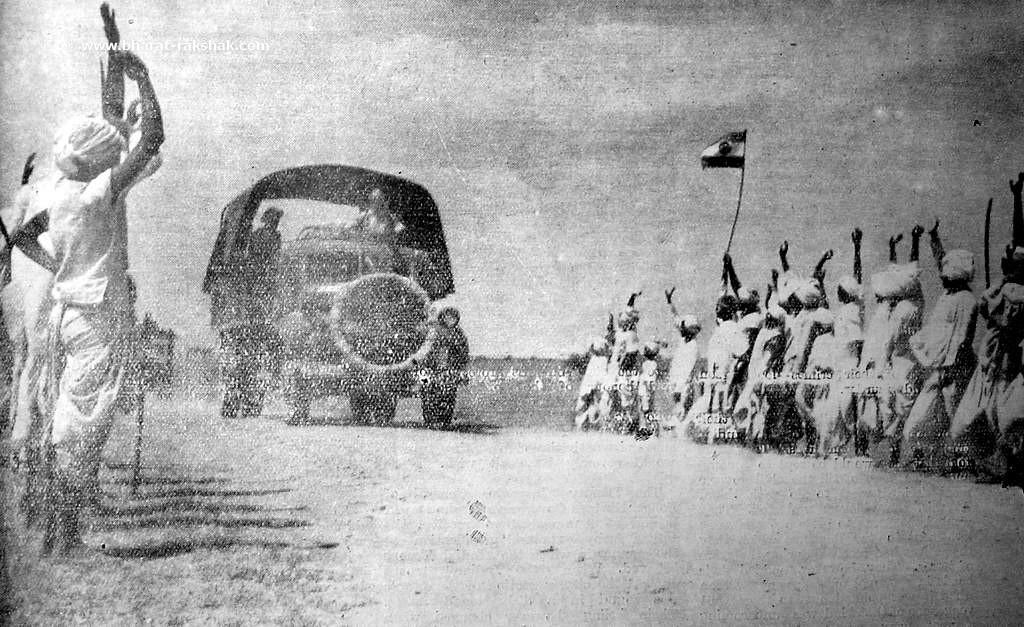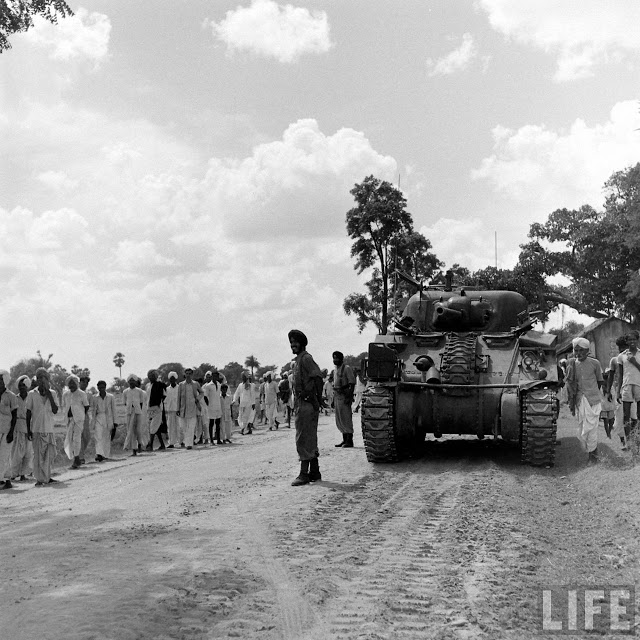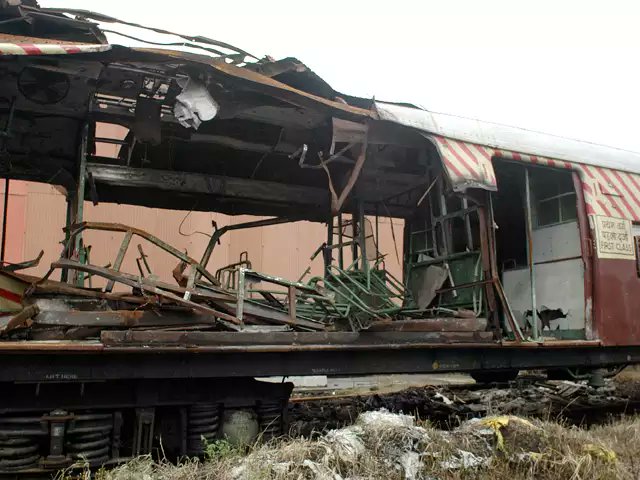
Folks. Ever heard of a temple with a Shiva Lingam so tall that it is worshipped on two floors?
And a Shaktipeeth where the Goddess so furious that Adi Sankaracharya changed her pose to face away from devotees?
No? A thread on the Draksharamam Bhimeswara Manikyamba Temple
And a Shaktipeeth where the Goddess so furious that Adi Sankaracharya changed her pose to face away from devotees?
No? A thread on the Draksharamam Bhimeswara Manikyamba Temple
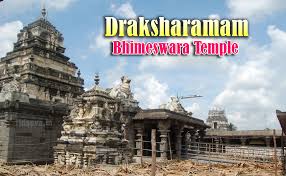
Draksharamam is a quaint little town located in the Godavari Delta, in the East Godavari district of Andhra. This otherwise sleepy little place hosts a temple with a history as old as our civilisation itself. Shiva worshipped as Bheemeswara and Parvati worshipped as Manikyamba. 
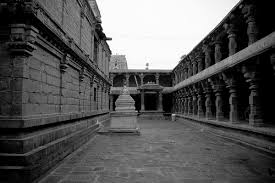
Legend has it that the Daksha Yagnya took place here, where Sati immolated herself after being insulted by her father, and the rampage by Lord Virabhadra ensued on the orders of an enraged Shiva.
Thus the name for the town as Draksharamam.

Thus the name for the town as Draksharamam.
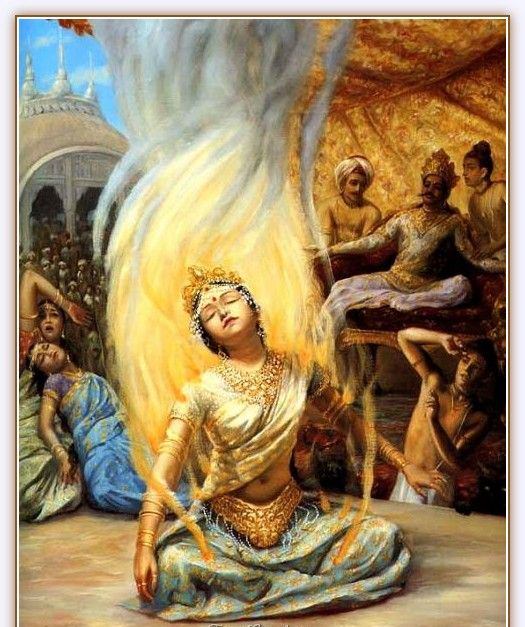
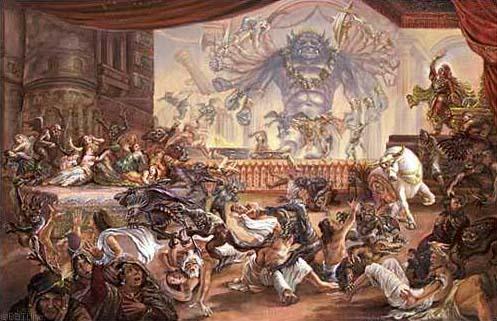
Another version for the name is the numerous grape plantations which proliferated in the area during ancient times. So the word "Draksha" (Sanskrit and Telugu for grapes) was used to christen the town.
Draksharama is a part of the legendary Pancha Rama Kshetras. These are the five holy places where the Shiva Lingam worn by the demon Tarakasura was broken and installed in temples by Lord Karthikeya. Only after the ShivLing broke, could Karthikeya slay Tarakasura. 

The Pancharama Kshetras are
1. Draksharamam
2. Amararamam (present day Amaravathi)
3. Ksheeraramam (present day Palakollu)
4. Somaramam (Bhimavaram)
5. Kumararamam (Samalkot).
Surprisingly, all of them are within the Krishna Godavari delta, corresponding to the Telugu heartland.
1. Draksharamam
2. Amararamam (present day Amaravathi)
3. Ksheeraramam (present day Palakollu)
4. Somaramam (Bhimavaram)
5. Kumararamam (Samalkot).
Surprisingly, all of them are within the Krishna Godavari delta, corresponding to the Telugu heartland.
Draksharamam is one of the Three Shiva shrines which form the traditional frontiers of the "Trilinga Desa"(root of the word Telugu). The historical boundaries of the Telugu land are drawn thus.
The three temples
1. Srisailam.
2. Kaleswaram
3. Bhimeswaram (Draksharamam)
The three temples
1. Srisailam.
2. Kaleswaram
3. Bhimeswaram (Draksharamam)
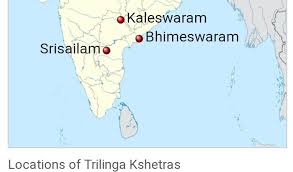
We have only spoken about the Lord Shiva, but Draksharamam is also one of the 18 Shakti Peethas of Goddess Parvati.
माणिक्या दक्षवाटिके॥ (Manikyaam Dakshavaatike) is how the verse flows.
She is worshipped as Manikyamba here.
माणिक्या दक्षवाटिके॥ (Manikyaam Dakshavaatike) is how the verse flows.
She is worshipped as Manikyamba here.

Interestingly, Manikyamba is a part of the Amba Trayam. Or the three mothers of Andhra. A stellar example of independent Shakta worship.
1. Srisailam Bhramaramba (Kurnool dist)
2. Sri Kalahasti Gynana Prasunamba (Chittoor dist)
3. Draksharamam Manikyamba. (EastGodavari)


1. Srisailam Bhramaramba (Kurnool dist)
2. Sri Kalahasti Gynana Prasunamba (Chittoor dist)
3. Draksharamam Manikyamba. (EastGodavari)
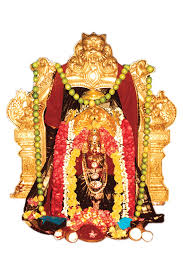


The Goddess Manikyamba doesnt face the devotees but looks a little aside. It is said that Adi Sankaracharya had adjusted her position to Agneya (south east) because he understood that the devotees couldnt tolerate her fury.
You can see that from this image. She is looking away.
You can see that from this image. She is looking away.
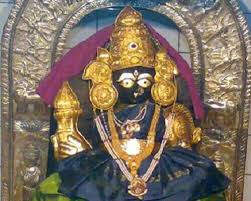
Like all other Shakti temples worshipped and consecrated by Adi Sankaracharya, there is a Sri Chakra located in the sanctum of Manikyamba. Usually, the idol is behind the Sri Chakram, but here the goddess is standing on the Sri Chakram itself. 
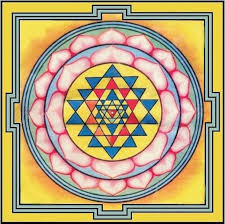
The Great Shiva lingam is 14 feet tall made of pure crystal. And is worshipped from two floors. We worship the base from the ground floor and the tip of the Shiva Lingam from the first floor here. 
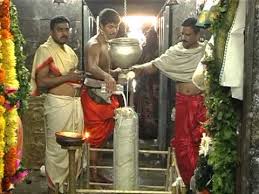
A symbol of the syncretic Shaiva/Vaishnava tradition is the Kshetrapalaka here. The resident guardian of the temple is none other than Lakshmi Narayana with the goddess sitting on the right thigh of Vishnu. This shrine is just to the right as we enter the temple.
The Large Nandi statue in the courtyard doesn't face the main sanctum of Shiva but towards the shrine of his consort, Parvati 😎 (Certainly knows who is incharge) 

The temple was built by King Bhima, the Eastern Chalukyan ruler between the 9th and 10th centuries. The temple is unusual in having two floors. Decked in a mixture of Chola and Vengi Chalukya styles, this temple has four main entrances and three concentric walk paths. 



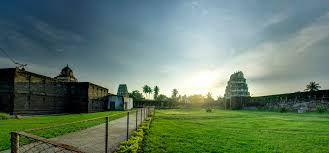
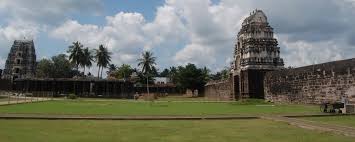
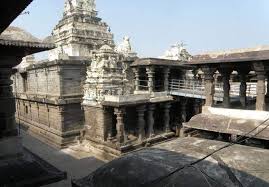

Within the compound, there is a Ashwatha tree (Peepal) considered as Lord Brahma. In its bark, there is an idol of Lord Vishnu and at its base is a Shiva Lingam.
This is considered to be the holy trinity of Hinduism right here
This is considered to be the holy trinity of Hinduism right here
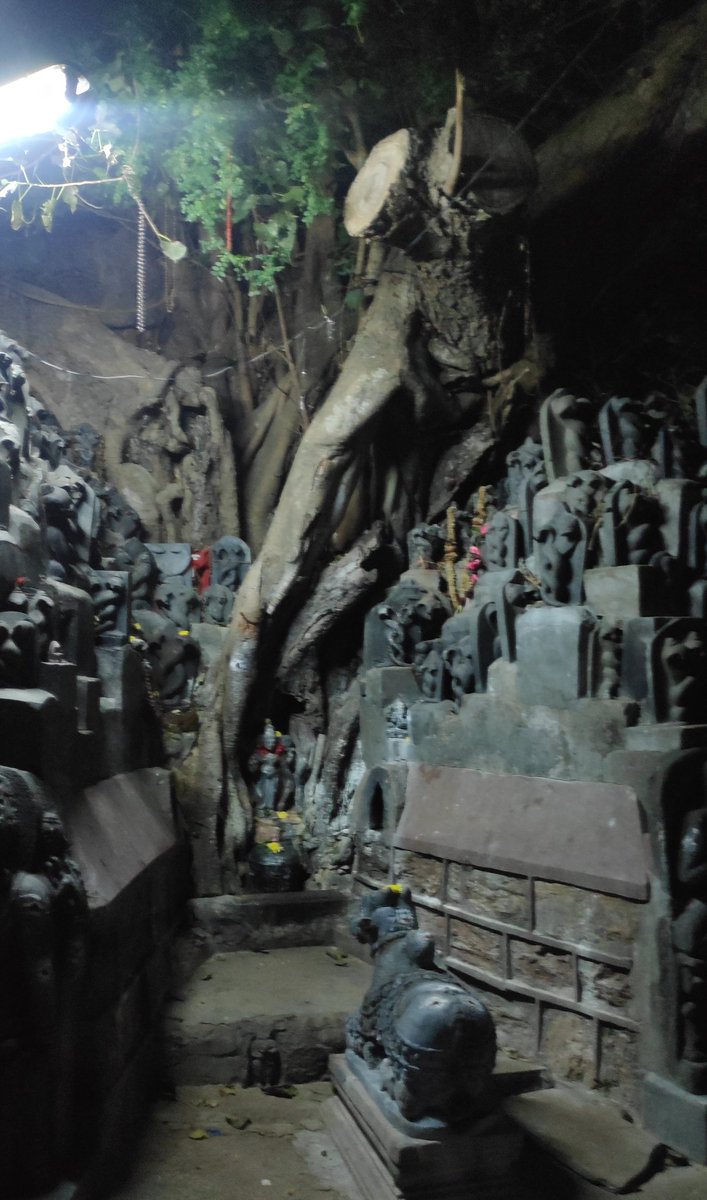
Several other local legends abound. That the Sun God installed the Shiva Lingam, Vyasa took refuge here after being banished from Kasi and the seven sages bringing the waters of the Sapta Godavari here. Too many to narrate in entirety here. 🤩
The construction of the temple, along with its contemporaries in the Vengi area denotes a high point of cultural richness and prosperity for the area under the Vishnukundina and later the Vengi Chalukyan (Eastern Chalukyan) rule. 
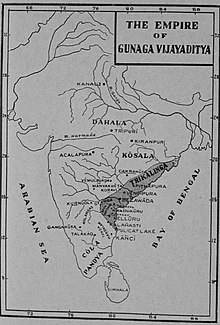
Telugu language was embellished with great works of literature, temples were built and developed, tanks and ponds created for irrigation purposes and the land experienced a period for relative peace and harmony for almost 500 years.
Starting from Kubja Vishuvardhana, who established the line of the Eastern Chalukyas, there was an unbroken line of rulers of this strategic area. A cultural pinnacle was reached under Raja Raja Narendra, the greatest among the rulers and founder of Rajamundry. 
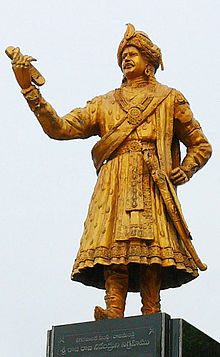
Draksharamam remains among the most famous Shaiva shrines in Andhra, especially important because it is also a Shakti Peetham. The Shaiva/Vaishnava confluence is demonstrated in this region with Vishnu or Shiva becoming the titular Kshetrapalaka for the others' temple.
So if you ever have a few days to spend in the glorious delta of the Godavari, Draksharamam should be on your must see list.
End of thread.
End of thread.
• • •
Missing some Tweet in this thread? You can try to
force a refresh

